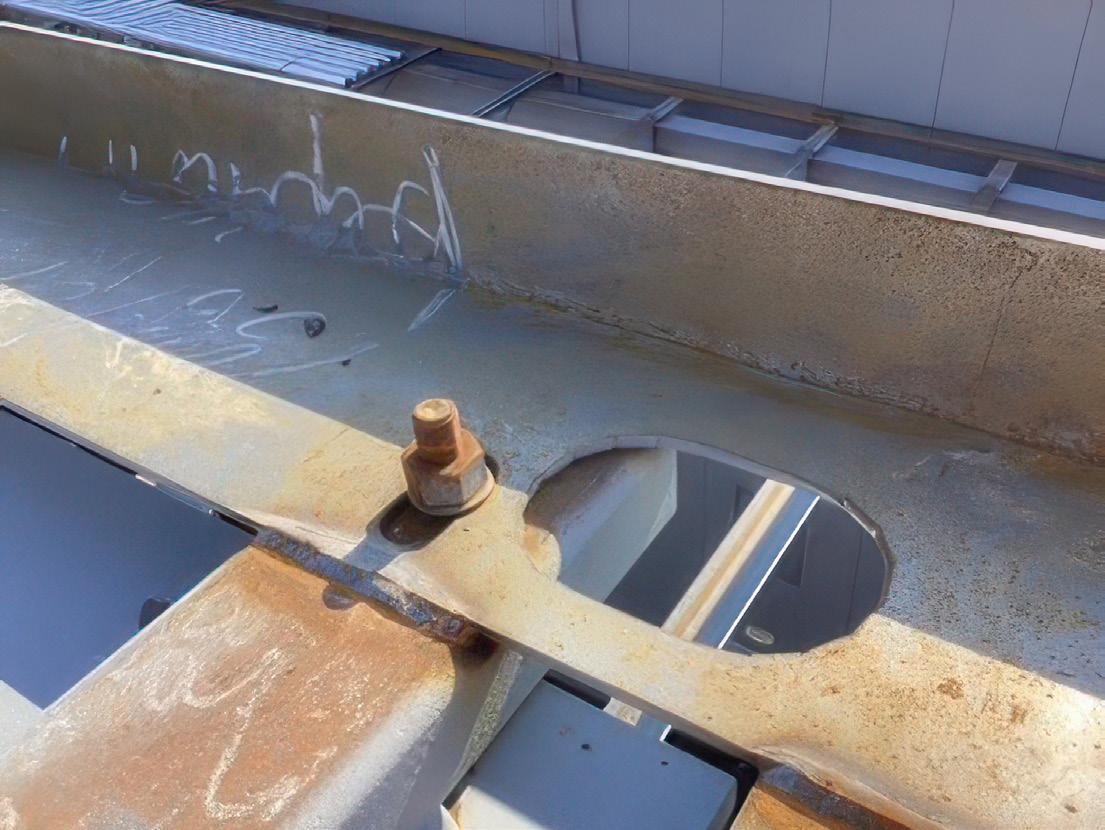
4 minute read
Boosting Efficency and Safety
The case for shop-attached bent plate in steel erection
By Glen Pisani, MAS Building & Bridge
One example of how fabricator-erector relationships directly impact work in the field manifests itself in the issue of shop-attached (or not) bent plate. On job sites across the country, risk increases, productivity is reduced, and costs go up for erectors when bent plate arrives loose. Shop-attached bent plate improves efficiency and speed by reducing the amount of material handling ironworkers must do in the field, making the steel erection process faster. In contrast, setting plate—which generally extends well past the centerline of the steel supporting it—requires temporary outriggers to support the bent plate
while adjusting it. This creates unnecessary extra steps, reducing productivity, and increasing costs.
Shop-attached plate improves quality because shop welding and bolting are done in a controlled environment. Often there is better fit-up and alignment with structural pieces.
The safety benefits are huge. Reducing field welding and bolting means less work is done at heights. Handling a 200-pound (or more) piece of steel while walking iron and setting it while hanging over the building’s perimeter isn’t safe or fun. Having bent plate shop-attached enables it to be more safely and efficiently lifted into place by a crane, reducing the opportunities for dropping plate to lower levels. It also reduces exposure to pinching and crushing injuries and musculoskeletal injuries.
This all adds up to cost savings and more efficient construction timelines.
Propose Solutions
The practice of providing shop-attached bent plate is not universal. It is often up to the fabricator to decide whether to provide materials this way. Key reasons may be that attached bent plate makes it more difficult to stack steel on a trailer for transport to the jobsite. But I would argue that the use of extra dunnage could easily resolve that issue.
Another reason might be related to the plumb tolerances on the project. Welded bent plate is always preferred but if tolerances are stringent and bent plates need to be able to be adjusted in the field, a simple bolted slotted connection is a good compromise.
Erectors should be qualifying this on their estimates and communicating with the fabricators that this is how they are estimating the project.
SEAA’s relationships with other industry
associations are critical to serving our members. Currently, no quality or process standards exist requiring fabricators to provide attached bent plate. In June, AISC’s Steel Construction Manual Committee agreed to discuss this issue and come back to SEAA with recommendations.
By embracing shop-attached bent plate, fabricators and erectors unlock substantial gains in productivity, quality, and safety on every job site. While logistical challenges like trailer stacking and field tolerances can deter its universal adoption, simple strategies—such as extra dunnage and slotted bolted connections—make shop attachment both practical and cost effective. As the AISC Steel Construction Manual Committee and SEAA work toward formal recommendations, erectors shouldn’t wait on standards to evolve. Advocating for shop-attached bent plate during pre construction planning is the quickest path to reducing risks, lowering costs, and accelerating project schedules. •

This is a non-typical example showing bent plate attached on Tube Steel (TS) spacers. This fabrication method is beneficial for safe and productive steel erection. Notice also the access hole for the ironworker to connect the bent plate.

This example shows adjusted bent plate after the bolt has been removed. Slotted holes on the bent plate allow for safe adjustment.
Glen Pisani has more than 30 years of experience in structural steel construction—20 as an owner and 14 as Steel Division Manager for MAS Building & Bridge, Inc., Norfolk, Massachusetts. He is an officer on SEAA's board of directors, where he has served since 2017.

